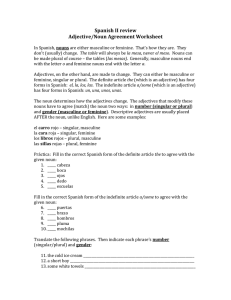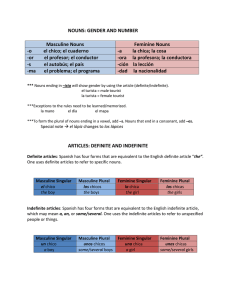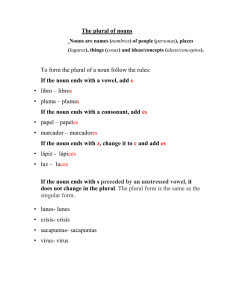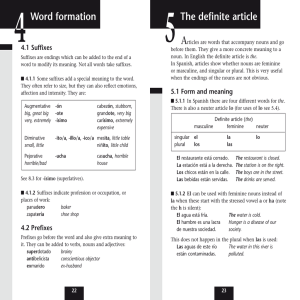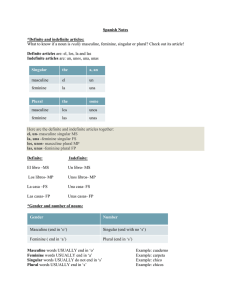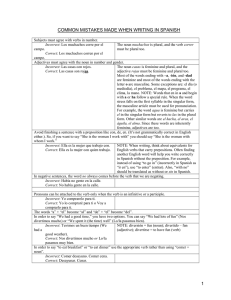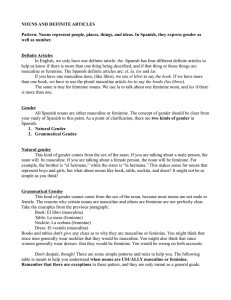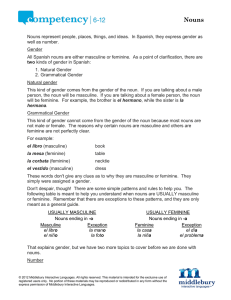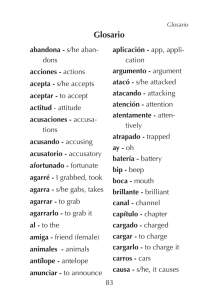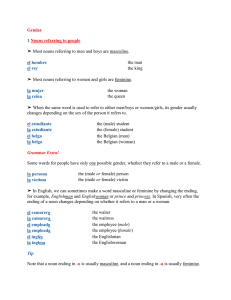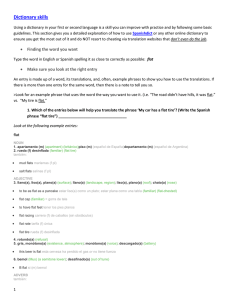The masculine form of the word the is ______. The feminine form of
Anuncio
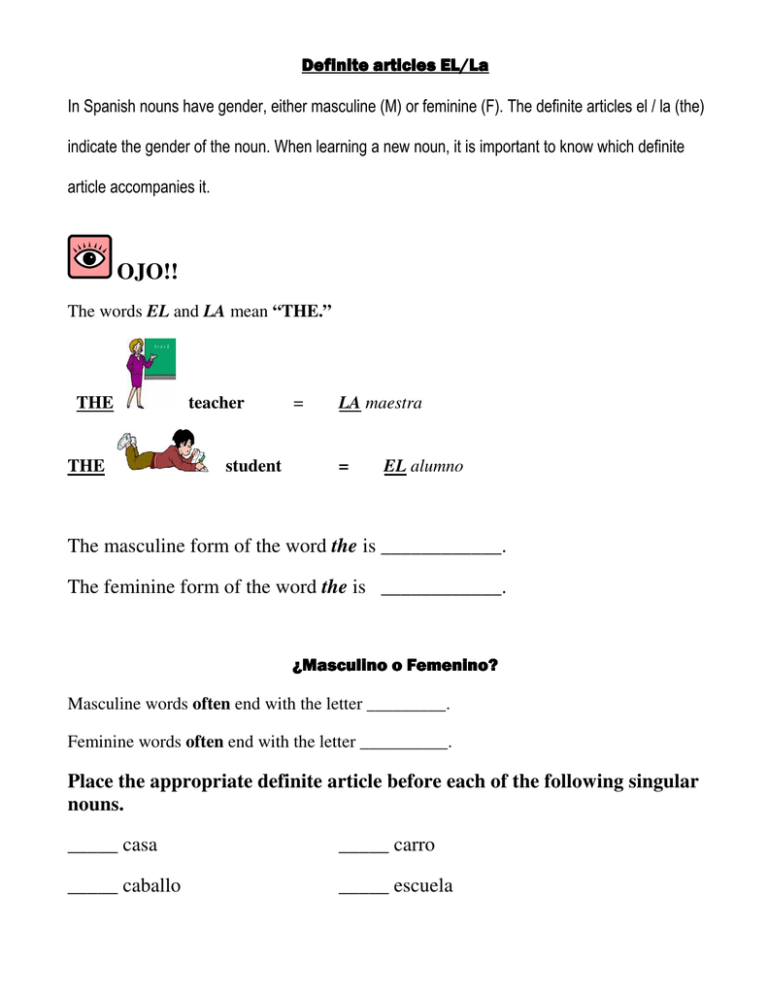
Definite articles EL/La In Spanish nouns have gender, either masculine (M) or feminine (F). The definite articles el / la (the) indicate the gender of the noun. When learning a new noun, it is important to know which definite article accompanies it. OJO!! The words EL and LA mean “THE.” THE THE teacher student = LA maestra = EL alumno The masculine form of the word the is ____________. The feminine form of the word the is ____________. ¿Masculino o Femenino? Masculine words often end with the letter _________. Feminine words often end with the letter __________. Place the appropriate definite article before each of the following singular nouns. _____ casa _____ carro _____ caballo _____ escuela _____ escritorio _____ pollo _____ prima _____ hamburguesa When using the definite article, you must pay attention to two things: • the gender of the noun (masculine and feminine) • the number of the noun (singular or plural) We have seen the masculine definite article in its singular form: “el” *The masculine plural form is: “los” We have seen the feminine definite article in its feminine form: “la” *The feminine plural form is: “las” el libro los libros la pluma las plumas el amigo los amigos la maestra las maestras To make the noun plural you either add an “s” or an “es”. • If the noun ends in a vowel add an “s” chico…………..chicos • If the noun ends in a consonant add an “es” papel……….. papeles Práctica Make the following nouns plural and don’t forget to add the appropriate plural form of the definite article. Ex: la pluma…..las plumas la casa _______________ el carro _____________ el caballo _______________ la escuela ___________ el escritorio ______________ el pollo _____________ la prima _________________ la hamburguesa _____________
